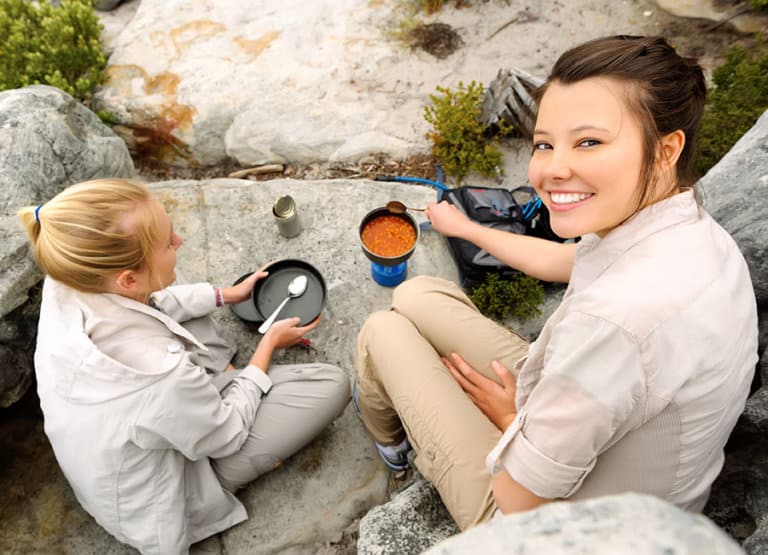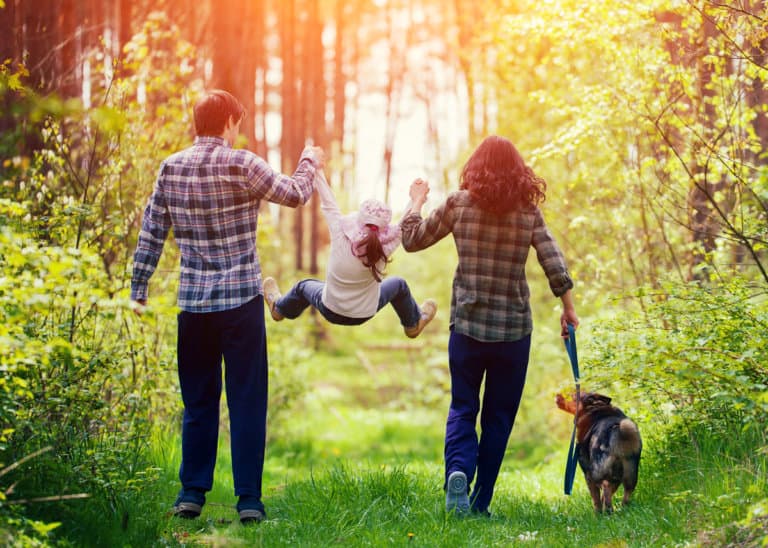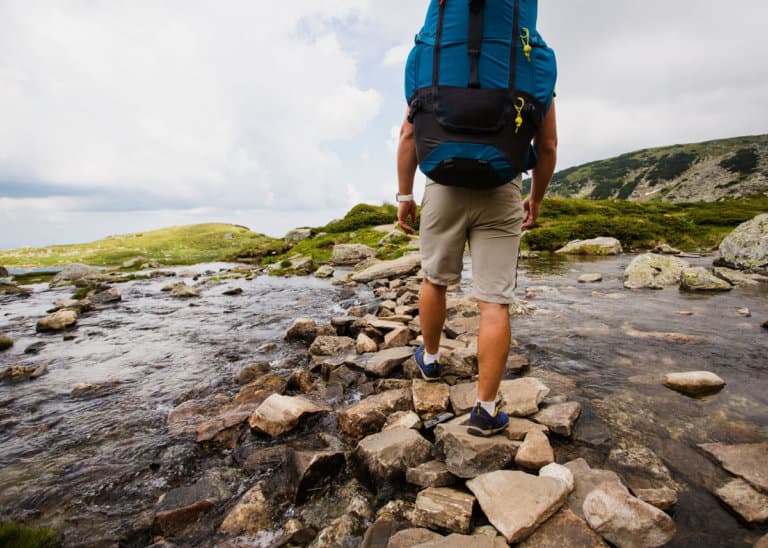How Hot is a Campfire? Average, Internal, Cooking Temps
Planning to cook over your campfire? Nice. But how hot is a campfire? In this post, you’ll learn the average temperature of a campfire (3 metrics) and the factors affecting heat. Plus the metals you need to worry about melting on a campfire.

This guide is part of our series on building and cooking on campfires.
How Hot is a Campfire?
There are lots of variables that affect the temperature of a campfire, which we’ll get into. But here’s the short answer.
How hot is a campfire? There are two temperatures to know.
- Internal Temperature: A campfire can reach internal temperatures of 1650°F (900°C) in the flames, known as the continuous flame region.
- Cooking Temperature: Above the flames (called the thermal plume region) where no flames are visible, you can expect temperatures of about 600°F (320°C). This is where you’ll do your cooking. The further away from the flames, the lower the temperature.
Large campfires (like a bonfire) can get even hotter – more than 2000°F (1100°C). Of course, you aren’t likely to cook on a full-scale bonfire…
For more about flame temperatures, check this page.

Typical campfires can get hot enough to melt an aluminum can but not a cast-iron frying pan.
Likely you’ve seen what happens to a soda can (aluminum alloy) when it’s thrown into a fire – it melts and almost disappears except for parts of the top and bottom of the can.
Average Metal Melting Points
Here are some average metal melting points for comparison.
- Aluminum: 1220°F (660°C)
- Aluminum Alloy: 865-1240°F (463-671°C) Melting point depends on the type of alloy.
- Cast Iron: 2060°F (1127°C)
- Stainless Steel: 2750°F (1510°C)
Be Careful! Some camping cooking utensils are made of aluminum – which could melt if they fall into the fire. It might be good to stick with stainless steel – so at least you can use it again … once it cools down.
And some camping cookware is made of aluminum – make sure to keep it out of the direct flames so it doesn’t damage your pot.
The color of the flame indicates the temperature. Red indicates cooler temperatures, while blue is much hotter. White flames indicate the hottest flames of all.
3 Variables Affecting Campfire Temperature
Like all fires the temperature will vary depending on several things.
- Type of fuel: type of wood (softwood, hardwood, resinous) and its dryness (seasoned or green).
- Size of the fire: the amount of fuel will affect how hot the fire can get.
- Oxygen flow: A campfire contained in a metal fire pit won’t get as hot as one with a consistent supply of oxygen (light breeze or pair of bellows).
There are three ingredients to a good fire: fuel, air, and heat. A large, rapidly burning fire piled high will burn a lot hotter than a steadily well-prepared fire, which is what we want for cooking.
3 Ingredients to a Good Fire
So, let’s discuss how to build that fire. You will need three things:
- Tinder: Small twigs, dry leaves, etc. that quickly catch fire and generate heat to start the larger pieces of wood burning. Paper, cardboard, and fire-starter also work as tinder.
- Kindling: Thicker pieces of wood that will burn easier than the pieces of log you will place on top. These can be larger, thicker twigs, small branches or slivers of your main fuel chipped off the larger logs. These will start generating coals as they burn down quickly allowing a good foundation for your fire.
- Fuel: This is typically the larger harder wood that is laid across the top which needs a lot more heat and flame to get burning, but once they do it will burn down nicely to create a perfect cooking fire.
For cooking you want an even heat to help cook steadily just like you would at home. If you pile everything on at once and make a blazing inferno it may look impressive but is not ideal for cooking.
An intense campfire can reach temperatures of 1650°F (900°C) which is capable of melting aluminum – and it will chew through your wood supply quickly and burn your food.
For cooking your fire needs to burn down a little first and create a good even base of coals.
Start with your tinder and kindling. The tinder will heat and catch fire to the kindling which in turn when burning will generate enough heat for your bigger pieces of fuel.
As they burn down it creates the perfect even heat base just like a stove-top and you can vary the temperature by adding more logs as you go along.
Want to improve your campfire skills? Check out 6 easy ways to build start the perfect campfire.
The only thing to take into consideration is the type of wood you use. Old, dry hardwood burns a lot longer and hotter than softwood (like pine) which burns quickly.
Green or freshly cut wood is full of sap and not entirely dry so it will burn at a lower temperature. Ideally, you want some good hardwood logs to get you through and burn evenly.
Don’t have a match? No problem. Here’s how to start a fire without matches or a lighter.

If you’ll be cooking for a crowd, how will you keep them entertained? Here are 42 BBQ Games and Ideas for Adults
Your Turn
Have a campfire temperature tip to share? What’s your question about cooking on a campfire? Join me in the comments!







Bryan, this is a great, fun, informative article! I am a 4-H educator for Oregon State University in the rural north central part of the state. I am working on more STEM-focused curriculum for the existing outdoor cooking activities I currently teach with youth, and would LOVE to include this information. Any suggestions on handheld infrared temp sensors that kids could use to take temps of various spots on a fire?
I’m glad to hear it. I don’t have any specific recommendation – but this is something I’ll research and cover in a future post.